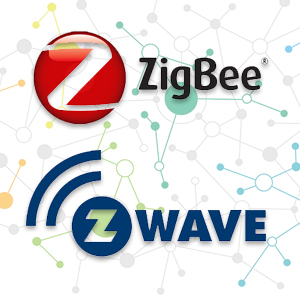
We're all familiar with WiFi and Bluetooth, but when it comes to the smart home or office the connected devices use different networks.
Zigbee, Z-Wave & OpenThings
In the UK, the most commonly used mesh networks for smart homes are ZigBee, which operates at a radio frequency of 2.4GHz, and Z-Wave, which operates at 868MHz. OpenThings, which operates at 433MHz, is also used, but mainly to include the use of the Energenie range of devices.
As a rule of thumb, halving the frequency doubles the range, so a 433MHz device can have 6 times the range of a 2.4GHz device. Other factors influence the achievable range, with the radio power of the device being the most obvious. As many of these devices are battery powered, their design is a compromise between minimum power and maximum range.
Operating at a higher frequency than the other technologies, and hence having a shorter range, ZigBee networks rely more heavily on the use of signal repeaters.
Universal Controller / Hub
In practice, most requirements are best met with a combination of ZigBee, Z-Wave, and OpenThings devices. This requires a universal controller / hub, capable of communicating via all three technologies.
The lower the radio frequency, the lower the data rate. ZigBee has a data rate of 250kbit/s, Z-Wave has the much lower data rate of 20kbit/s, and OpenThings is even lower. Differences in the protocols used by these devices also determine the achievable data rate.
In practice, the lower data rates of the lower frequency devices have little noticeable impact, and the availability of particular devices is much more important. For example, the Aquara ZigBee light switch is one of the best available. Equally, all of the best thermostatic radiator valves are Z-Wave devices.